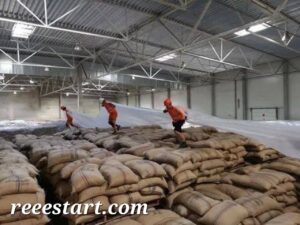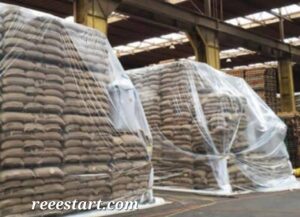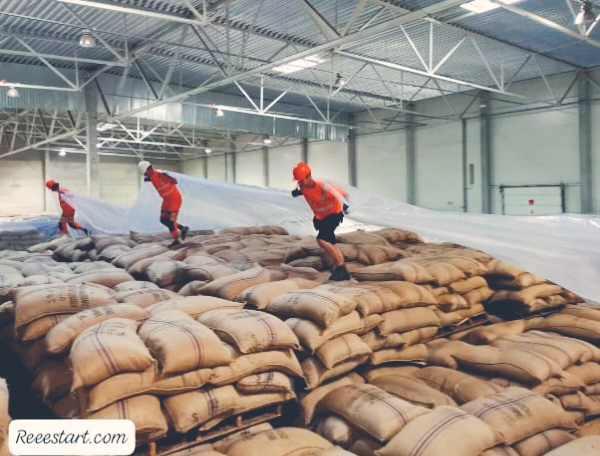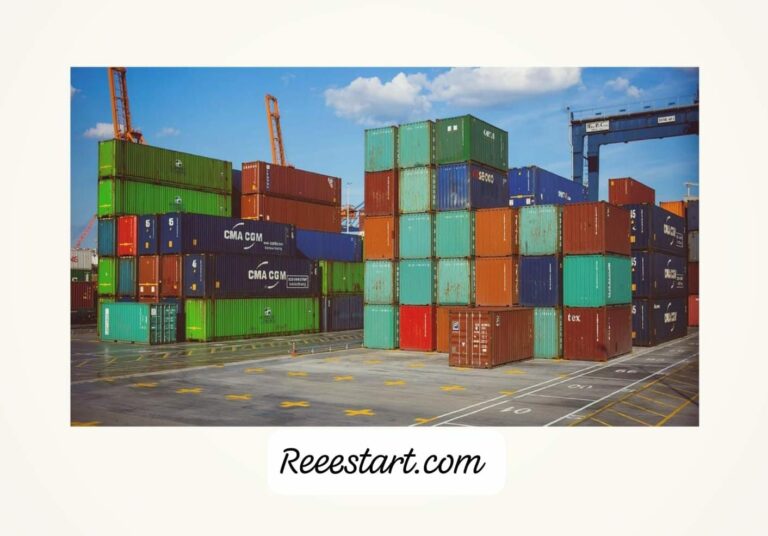Fumigation Dosage and Space Volume Calculation is a critical method for pest control in agricultural commodities, especially in storage environments. An essential step in the fumigation process is determining the correct dosage of fumigant, which is based on the volume of the storage space. For agricultural engineers, understanding how to accurately calculate the volume of different storage structures is crucial for ensuring effective fumigation. This guide offers a detailed, step-by-step process for calculating the volume of various types of storage structures using metric measurements.
Fumigation Dosage and Space Volume Calculation in Metric System
The success of fumigation depends on achieving the correct concentration of fumigant inside an enclosed space for an appropriate amount of time. An accurate calculation of the total volume of the space is vital for determining the amount of fumigant needed. A miscalculation may lead to ineffective pest control or safety hazards.
Additionally, the importance of fumigation extends beyond simply controlling pests. It plays a crucial role in ensuring that agricultural products remain safe for consumption, preventing contamination by pests such as insects, rodents, or mold. By controlling pest populations, fumigation helps ensure the health of crops, thus preventing the spread of disease and damage during storage and transportation.
Fumigation is particularly important in international trade, where agricultural products are frequently exported across borders. Products that are not properly fumigated could spread pests or diseases to other countries, potentially causing devastating economic losses and disrupting global trade. This makes fumigation a vital tool for maintaining the integrity of the agricultural supply chain.

Section 1: Volume Calculation Methods
- Basic Volume Calculation for Rectangular and Square Buildings
- For square or rectangular buildings, calculating the volume is straightforward. Simply multiply the interior length (L), width (W), and height (H) of the space. This will give you the total cubic content of the space.
- Formula:
Volume = L × W × H - Example:
If the building is 24 meters long, 12 meters wide, and 6 meters high: - Volume = 24 m × 12 m × 6 m = 1,728 cubic meters
- This volume will be used to determine how much fumigant is required for effective pest control.
Calculating Volume for Irregularly Shaped Buildings
Some agricultural storage structures have irregular shapes, such as buildings with peaked roofs or lofts. In these cases, break down the space into simpler units and calculate the volume for each unit separately. Afterward, sum the volumes of all sections to find the total volume.
- Example: Rectangular Building with Triangular Loft
- Suppose you have a building with a rectangular section and a triangular loft above it.
- Length (L) = 24 meters
- Width (W) = 12 meters
- Height of Rectangular Section (H1) = 6 meters
- Height of Triangular Loft (H2) = 4.5 meters
To calculate the total volume:
- Volume of Rectangular Section:
Volume_rectangular = L × W × H1
= 24 m × 12 m × 6 m = 1,728 cubic meters.
Volume of Triangular Loft
- First, calculate the area of the triangle:
Area_of_Triangle = (W × H2) / 2
= (12 m × 4.5 m) / 2 = 27 square meters - Next, calculate the volume of the triangular loft:
Volume_loft = Area_of_Triangle × L
= 27 m² × 24 m = 648 cubic meters
Total Volume
- Total_Volume = 1,728 cubic meters + 648 cubic meters
= 2,376 cubic meters - This total volume of 2,376 cubic meters is used to determine the fumigation dosage.

Volume Calculation for Quonset Huts (Semicircular Ends)
Quonset huts are common for agricultural storage and have semicircular ends. The volume of a Quonset hut can be calculated by finding the area of the semicircular end and multiplying it by the length of the structure.
- Formula for Volume
Volume = Area_of_Half_Circle × Length - Example:
For a Quonset hut with a height (H) of 3.6 meters and a length (L) of 12 meters: - 1. Area of Full Circle:
Area_of_Full_Circle = π × H²
= 3.14 × (3.6 m)²
= 3.14 × 12.96 = 40.7 square meters - Area of Half-Circle:
Area_of_Half_Circle = Area_of_Full_Circle / 2
= 40.7 / 2 = 20.35 square meters - Volume:
Volume = Area_of_Half_Circle × Length
= 20.35 m² × 12 m = 244.2 cubic meters
Volume Calculation for Cylindrical Storage (Round Bin)
Cylindrical storage bins are common for bulk storage of agricultural products. To calculate the volume of a cylindrical bin, first determine the area of the circular base and then multiply by the height of the cylinder.
- Formula for Volume:
Volume = Area_of_Base × Height - Example:
For a cylindrical bin with a diameter (D) of 11 meters and height (H) of 5.5 meters: - 1. Radius (R):
R = D / 2 = 11 m / 2 = 5.5 meters - Area of Base (Circle)
Area_of_Base = π × R²
= 3.14 × (5.5 m)²
= 3.14 × 30.25 = 95 square meters - Volume:
Volume = Area_of_Base × Height
= 95 m² × 5.5 m = 522.5 cubic meters
Important Considerations for Fumigation Calculations
Do Not Deduct for Occupied Space: When calculating the volume, do not subtract areas occupied by machinery, commodities, or furnishings unless they are impervious to fumigants (like fresh fruits, vegetables, or sealed goods).
- Impermeable Materials: For commodities that cannot absorb fumigants (like canned goods or sealed products), make sure to follow specific fumigation guidelines as they may require longer exposure or different treatment protocols.
- Peaked Roofs: For buildings with peaked roofs, use the average height from the sidewall to the peak of the roof when calculating volume to ensure the fumigant can effectively fill the entire space.
- Aeration and Release Procedures: After fumigation, follow the proper aeration and release procedures to ensure any residual fumigant is safely ventilated from the space.
Fumigation Dosage Calculation
After calculating the volume of the space, you can calculate the fumigant dosage needed for effective pest control. Fumigation dosage is generally given as a specific amount per cubic meter (CBM) of space.
- Formula for Fumigant Dosage:
Required Fumigant Dosage (kg) = Volume (CBM) × Dosage Rate (kg/CBM) - Example:
If the recommended dosage is 10 kg per 1,000 cubic meters and the volume is 1,786.81 CBM:
Required Fumigant Dosage = (1,786.81 × 10) / 1,000 = 17.87 kg
Importance of Fumigation in Global Trade
Fumigation is not only critical for pest control, but it also plays a vital role in global trade. In international markets, especially in agriculture, products are traded across borders, and pest infestation is a major concern. Without proper fumigation, agricultural products may harbor pests and diseases that can be transferred to other regions, causing harm to local ecosystems, agricultural practices, and economies.
Fumigation certificates are required by many countries as part of international trade regulations to prevent the spread of pests. A fumigation certificate indicates that the product has undergone proper treatment and is free from harmful pests or diseases. This certificate is vital for ensuring compliance with international phytosanitary regulations, which are designed to protect plant health and prevent the introduction of pests into new environments.
Many trade organizations and regulatory bodies, including the World Trade Organization (WTO), the World Health Organization (WHO), and the International Plant Protection Convention (IPPC), mandate fumigation certification to promote fair trade and protect the agricultural industry. Failure to provide the proper documentation or perform adequate fumigation can lead to shipment rejection, financial losses, and reputational damage for traders, exporters, and importers.
Moreover, international shipping standards such as ISPM 15 for wooden packaging materials also require fumigation treatment and certification, making it a key step in the logistics of international trade.
References for Volume Calculations and Fumigation Practices
- USDA-APHIS (Animal and Plant Health Inspection Service)
Provides guidelines for fumigation procedures and fumigant dosage, including volume calculation for various types of storage structures.
Reference: “Fumigation Guidelines” by USDA-APHIS. - ISPM 15 (International Standards for Phytosanitary Measures)
Provides international standards on fumigation and pest control measures.
Reference: ISPM 15 – “Regulation of wood packaging material in international trade.” - FAO (Food and Agriculture Organization of the United Nations)
- Offers guidance on fumigation and pest control, including volume measurement and fumigant application.
Reference: FAO Technical Paper on “Fumigation Procedures and Calculations.” Link - GAFTA (Grain and Feed Trade Association)
Sets international standards for fumigation, including volume calculations based on structure dimensions.
Reference: GAFTA’s “Fumigation Standards.” - BASF Agricultural Solutions
A leading provider of fumigation solutions, offering practical insights into fumigation procedures and dosage calculations.
Reference: BASF “Fumigation Practices and Dosage Calculations.” - IPPC (International Plant Protection Convention)
A treaty focusing on plant protection standards and pest control, including fumigation techniques and dosage calculations.
Reference: IPPC Standards and Fumigation Practices.
These references provide valuable resources for agricultural engineers involved in fumigation, including standardized methods for volume calculation and fumigant dosage determination.




